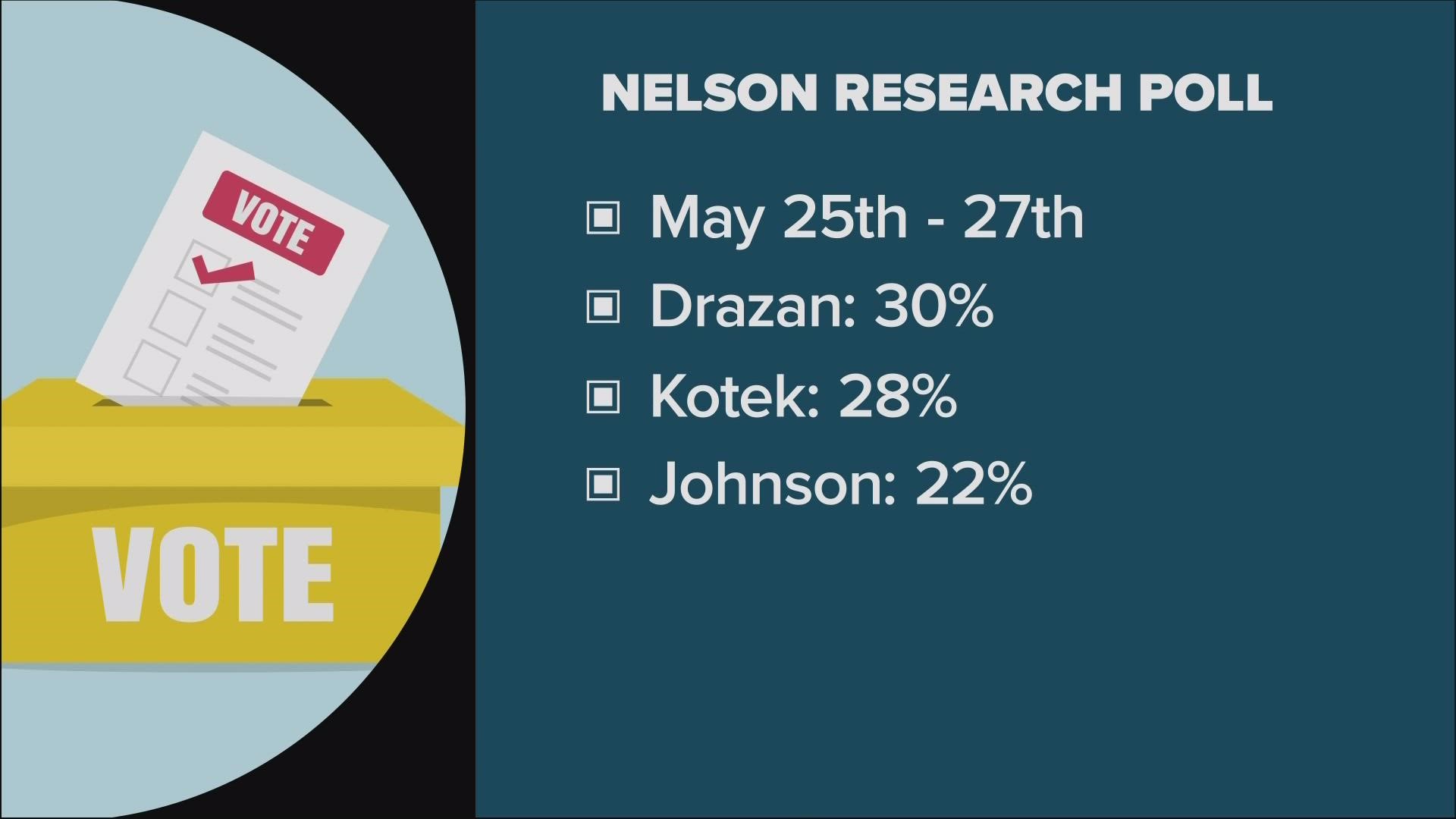PORTLAND, Ore. — Political polls can draw very different results for the same set of candidates. Just look at recent polling for the Oregon governor's race.
A poll conducted by Nelson Research in late May showed Republican candidate Christine Drazan leading the way with 30% of likely voters saying they would pick her. Democrat Tina Kotek came in second with roughly 28% and unaffiliated candidate Betsy Johnson came in third with roughly 22%.
Another poll — paid for by Johnson's campaign — was conducted July 23-25. It showed Kotek in the lead with 33%, Johnson in second with 30% and Drazen in third with 23%.
A third poll, paid for by Republicans and conducted July 28-30, showed Drazan leading with 32.4%, Kotek in second with 31.4% and Johnson in third again with 24.4%.
So how can three polls show such different results? And how is it that Johnson did so much better in the poll that was paid for by her own campaign compared to the two others?
"It's natural for folks to say, 'Hey, what's going on here? Is this real? Is there a thumb on the scale from the individual candidates?' And there is reason for some skepticism. But I think if we sort of look at the different pieces, there's also some consistency, and that's, 'Who's at the top right now?'" said John Horvick, a senior vice president at DHM Research, a polling company in the Portland area.
Horvick said that the challenge for any poll, whether it's independent or conducted by a campaign, is that it's impossible to predict what the turnout will be like in November.
That means pollsters have to make some educated guesses on things like what proportion of the electorate will be Republican or Democrat, what the breakdown on age groups will be or what parts of the state voters live in.
"All those things can make a difference in who you sample and therefore what the results are gonna be," said Horvick.
And there isn't necessarily one best way to get an accurate polling sample, he said. Historical data is helpful, but factors like how conservative or liberal the area in which people live can make polls tricky.
"That's why it's so critical to show people who you talk to so that they can make an independent judgment about whether or not they think that that poll is accurately reflecting what turnout's gonna be in November," said Horvick.
He said transparency is key for any poll to be taken credibly. Without transparency, it's easy for voters to get the impression that a candidate is trying to use the results to form their own narrative.
With that said, KGW asked Horvick about the poll paid for by Betsy Johnson's campaign.
One of the questions on the poll asked participants how favorably they viewed a candidate. It asked if they would rather vote for a progressive Democrat, a qualified common sense independent or a devout Trump Republican — which does not exactly define Christine Drazan. But she is a Republican, and it does seem to slant the question against her.
"There's nothing wrong with the candidate testing a description of their opponent, and to see if that's gonna resonate with voters," said Horvick. "Now if they then use that information to then talk about their opponent or talk about themselves, trying to pass that off as a neutral description [...] voters should look at that and be real critical."
Some other things to pay attention to when it comes to poll results from candidates are, how many surveys have they done, when were they done and how large were the sample sizes? The bigger the sample size, the lower the margin of error.

